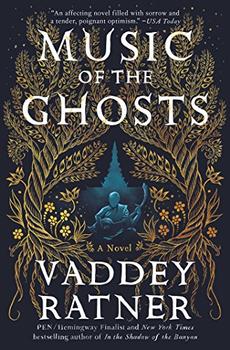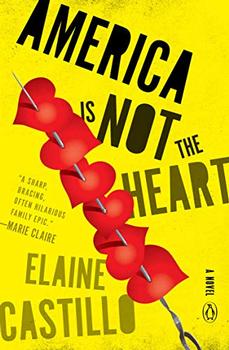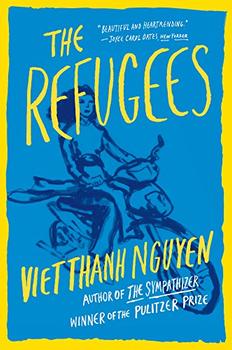Summary | Excerpt | Reading Guide | Discuss | Reviews | Beyond the book | Read-Alikes | Genres & Themes | Author Bio

Music of the Ghosts is about healing and forgiveness, but it is also about identity and the revival of Cambodian culture. The novel follows Vaddey Ratner's highly acclaimed debut and similarly focuses on what she knows personally: Ratner herself survived the Khmer Rouge. Led by Pol Pot, the Khmer Rouge held power in Cambodia from 1975 to 1979. They forced a mass exodus from cities into rural areas, killing or causing the deaths of least 1.5 million Cambodians in the fields, thus dubbed "the killing fields." It was an atrocity from which the country is still recovering. As Ratner says in the author's note: "If my first novel, In the Shadow of the Banyan is a story of survival, Music of the Ghosts is a story of survivors."
The book opens to Suteera, a thirteen-year-old girl who is confused and scared as she and her aunt navigate the corpses and landmines that riddle the Cambodian countryside. They are attempting to escape the Khmer Rouge by crossing the border into Thailand. Though Suteera knows her mother and baby brother died on the journey, her father's fate remains a mystery.
The story then moves to the present, where we hear from two protagonists in turn, both of whom are haunted by the past. The first voice is 38-year-old Suteera—now Teera—who has been living in the United States since her escape years ago and is now on a plane back to Cambodia. Her aunt has recently died and Teera is bringing half of the ashes with her.
Teera also holds an intriguing letter from a man identified only as the Old Musician. He is the novel's second narrator. In the letter he has told Teera that he has three musical instruments that were her father's—and that he wants her to have them. This gives Teera hope that she may find answers about her father.
Fracture and division permeate the descriptions of these main characters. The Old Musician is blind in one eye and has limited vision in the other. A scar runs across "the gorges and gullies of his disfigured face." There is a brokenness in Teera too. Her new name, now Americanized, is only a part of what it once was. As she sits through the long flight, she sees her fellow passengers as more legitimately Khmer than herself. While they are going home, "Teera feels herself hurtling. Toward what, she doesn't know. The future and past lie in borderless proximity." Her identity hangs between two worlds.
Throughout Music of the Ghosts, Ratner is thematically focused on the healing from "the killing fields"—for individuals, the country, and the culture. This recovery requires a balance of punishment and forgiveness. Certainly there are individuals who are guilty and need to be brought to justice. But how many others lie somewhere between guilt and innocence? Before rising to power, the Khmer Rouge was a communist guerilla group that gained momentum in part because the political unrest in Southeast Asia allowed an overzealous leader such as Pol Pot to emerge.
Ratner effectively uses contrasts between characters, even between minor characters, to showcase the ambiguity surrounding questions of guilt. For example, it was a Khmer Rouge soldier who helped young Suteera and her aunt escape, and it was Teera's own mother who once wrote newspaper articles criticizing the rich and powerful, helping fuel the communist movement.
The primary juxtaposition is between the two main characters—a girl who escapes, but is left without parents, and the Old Musician who desperately wants to atone for something but who feels that no punishment would be sufficient. The Old Musician recalls himself "during those adolescent years when politics was a kind of intoxicant for a generation heady with the country's newly gained independence." Through the Old Musician, we are pulled into the weight and mystery of his political involvement. But we can only learn it gradually, as he builds up the emotional strength to sit face-to-face with Teera and address their shared past.
Music is present throughout the novel. There are noticeable points of connection—repeated phrases or images that bridge the two narratives in harmonious layers. Music is the pull of the plot because the purpose of Teera's visit to the Old Musician is to retrieve the musical instruments that belonged to her father. But music is also the pull of the story on a deeper, more resonant level. Hearing music evokes memory and connection for both characters. The Old Musician believes that music is what has kept him alive. The kse diev, or sadiev, is the instrument closest to the Old Musician; he plays it with gratitude and reverence, this "ancient instrument used to invoke the spirits of the dead." (See 'Beyond the Book.')
As the two voices weave in and out of each other's past and present, Music of the Ghosts gives a nuanced and intimate view of Cambodia and its history. We see the strands of choice and circumstance laid bare and can only marvel at the resilience of the Khmer people. Teera's healing is tentative, deliberate, and ongoing as she looks for "the melding of her divided self, the stranger to this land and the child who never left."
![]() This review was originally published in The BookBrowse Review in April 2017, and has been updated for the
April 2018 edition.
Click here to go to this issue.
This review was originally published in The BookBrowse Review in April 2017, and has been updated for the
April 2018 edition.
Click here to go to this issue.

If you liked Music of the Ghosts, try these:

by Elaine Castillo
Published 2019
With exuberance, grit, and sly tenderness, here is a family saga; an origin story; a romance; a narrative of two nations and the people who leave one home to grasp at another.

by Viet Thanh Nguyen
Published 2018
Viet Thanh Nguyen's The Sympathizer was one of the most widely and highly praised novels of 2015. Nguyen's next fiction book, The Refugees, is a collection of perfectly formed stories written over a period of twenty years, exploring questions of immigration, identity, love, and family.
Your guide toexceptional books
BookBrowse seeks out and recommends the best in contemporary fiction and nonfiction—books that not only engage and entertain but also deepen our understanding of ourselves and the world around us.